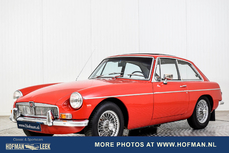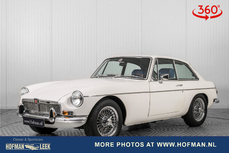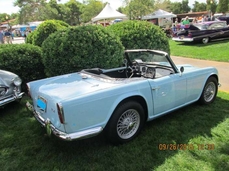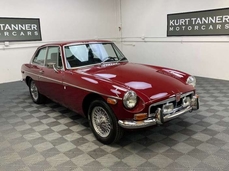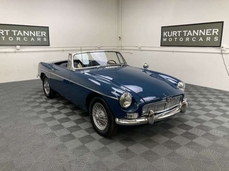MG MGB GT In Line 4 109 cui 1969
General description :
Weber carburetor system. New floor right and left floor pans. New trunk floor pan. New fuel tank and fuel pump and sending unit. New exhaust system. Distributor rebuilt new bushings, points, condenser, rotor and cap. Rebuilt clutch master cylinder and slave cylinder. Repaired heater box and heater core. Hydraulic shocks reconditioned and refilled. Steering rack rebuilt and new boots installed. Brake system rebuilt, new disk pads and rotors, new rear shoes and wheel cylinders. All new brake hoses. Converted to a single battery system. Front wheel bearings and seals replaced.
https://www.britishcarclassifieds.com/autos/mg/mgb-gt/1969-mg-mgb-gt-1469.html
1969 MG MGB GT In Line 4 109 cui is listed sold on ClassicDigest in Surrey by British Cars for $3800.
Car Facts
Car type : Car Make : MG Model : MGB GT Model Version : In Line 4 109 cui Engine size : 0.0 Model Year : 1969 Sub type : Sedan
Sold
Seller Information
Sold
People who viewed this MG MGB GT also viewed similar MG listed at ClassicDigest
Other cars listed for sale by this dealer
About MG
The MG (Morris Garages) story is a rich tapestry that spans several decades and involves various owners and corporate entities. Here is an overview of the MG story from its inception to the challenging period under the British Leyland (BL) corporation, highlighting key models and their specifications:1. Foundation and Early Years:
Year of Establishment: 1924
Founder: Cecil Kimber
Initial Focus: Coachbuilding and customization of Morris cars.
2. MG Octagon Logo:
The iconic MG octagon logo was introduced, representing the merger of MG with Morris.
3. MG M-Type Midget (1929–1932):
Key Features:
Compact two-seater.
Powered by a 0.8L engine.
The beginning of the Midget series.
4. MG T-Series (1936–1955):
Key Models:
MG TA, TB, TC, TD, TF
Key Features:
Roadsters with classic styling.
Success in motorsports, particularly in pre and post-World War II eras.
5. Post-War Era and MG A (1955–1962):
Key Features:
Departure from traditional styling.
First MG to feature a streamlined, modern design.
Available as a roadster or coupe.
Powered by a 1.5L engine.
6. MG B (1962–1980):
Key Features:
Classic British sports car design.
Available as a roadster or GT coupe.
Produced in high numbers.
Variants included the powerful MGC.
7. MG Midget (1961–1979):
Key Features:
Compact sports car based on the Austin-Healey Sprite.
Affordable and popular.
Various iterations with engine upgrades.
8. MG C (1967–1969):
Key Features:
A more powerful version of the MGB, featuring a 2.9L inline-six engine.
Limited production.
9. BL Corporation Era (1968–1980):
Acquisition by British Leyland (BL):
MG became part of the larger British Leyland corporation.
Struggles with quality control and labor disputes.
Decline in product quality and reputation.
10. MG MGB GT V8 (1973–1976):
Key Features:
Introduction of a factory-produced MGB with a V8 engine.
Attempt to inject performance into the lineup during challenging times.
11. MG RV8 (1992–1995):
Key Features:
Limited production convertible.
Revival attempt by Rover Group (successor to BL) to rekindle the classic MG spirit.
The MG story during the British Leyland era marked a challenging period with a decline in quality and reputation. However, the brand continued to be associated with classic British sports cars.




